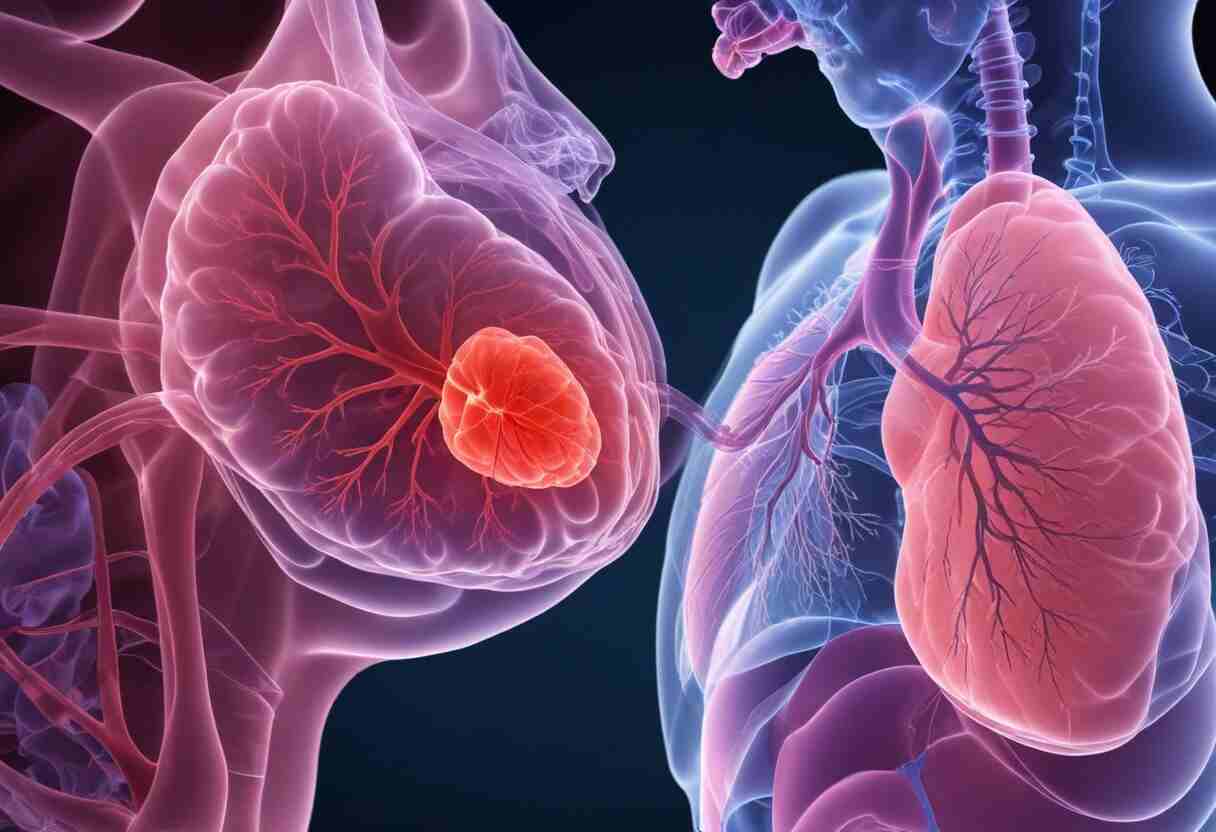Acute hypoxic respiratory failure is a serious health issue where the lungs can’t supply enough oxygen to the blood. This often requires immediate medical attention to prevent severe complications or death. This illness has a unique description in the International Classification of Diseases, Tenth Revision (ICD-10), which aids medical professionals in diagnosis, treatment, and billing.
What is Acute Hypoxic Respiratory Failure?
When blood oxygen levels abruptly fall, acute hypoxia respiratory failure can result, causing life-threatening symptoms as dyspnea, rapid breathing, disorientation, and blue-tinged lips, skin, or nails. Severe infections, lung conditions, trauma, or exposure to toxic substances are some of the causes. In order to raise oxygen levels and address the underlying cause, this problem needs to be treated medically very away.

ICD-10 Code for Acute Hypoxic Respiratory Failure
J96.01 is the ICD-10 code for acute hypoxia respiratory failure. What the code stands for is as follows:
- J: Diseases of the respiratory system.
- 96: Respiratory failure, not classified elsewhere.
- 0: Acute respiratory failure.
- 1: Low oxygen levels in the blood (hypoxia).
In addition to guaranteeing that patients receive the appropriate care and supporting insurance claims, this code assists physicians in appropriately classifying and documenting the ailment.
What ICD-10 Codes Are Used for Acute Hypoxic Respiratory Failure?
Certain ICD-10 codes can be used to identify acute hypoxic respiratory failure depending on the specifics of the condition:
- J96.01: This code is used for acute respiratory failure with hypoxia, which occurs when a patient experiences low blood oxygen levels and abrupt breathing difficulties.
- J96.91: This code is for unexplained respiratory failure with hypoxia, which means the patient has low blood oxygen and breathing difficulties, but it’s unclear what’s causing them. When further details are required for an accurate diagnosis, this code is utilized.
ICD-10 Code J96.01: Detailed Overview
The International Classification of Diseases, Tenth Revision (ICD-10), is a system that healthcare providers in the United States use to code and classify all diagnoses, symptoms, and procedures for hospital care.
Example:
Code J96.01: Acute respiratory failure with low oxygen levels
Code Details
- J: Diseases of the respiratory system
- J96: Respiratory failure, not classified elsewhere
- J96.0: Acute respiratory failure
- J96.01: Acute respiratory failure with low oxygen levels
| ICD-10 Code | Description |
| J96.00 | Acute respiratory failure, unspecified whether with hypoxia or hypercapnia |
| J96.01 | Acute respiratory failure with hypoxia |
| J96.02 | Acute respiratory failure with hypercapnia |
| J96.20 | Acute and chronic respiratory failure, unspecified whether with hypoxia or hypercapnia |
| J96.21 | Acute and chronic respiratory failure with hypoxia |
| J96.22 | Acute and chronic respiratory failure with hypercapnia |

Importance of Accurate Coding
Accurate coding is essential in the medical field for multiple reasons:
- Diagnosis and Treatment: Accurate coding enables medical professionals to better diagnose patients and create individualized treatment regimens by better understanding their conditions.
- Insurance and billing: ICD-10 numbers are used by insurance companies to handle claims. In addition to preventing claim denials, accurate coding guarantees that healthcare practitioners are paid for their services.
- Healthcare Statistics: ICD-10 codes are used to assist collect data on a variety of health disorders in healthcare statistics. Planning, research, and spotting illness trends all depend on this data.
Causes of AHRF
Several conditions can cause Acute Hypoxemic Respiratory Failure (AHRF), including:
- Pneumonia: An infection that inflames the air sacs in one or both lungs.
- Acute Respiratory Distress Syndrome (ARDS): Severe inflammation and fluid buildup in the lungs.
- Chronic Obstructive Pulmonary Disease (COPD): A collection of lung conditions that obstruct airflow and make breathing challenging.
- Pulmonary Embolism: One of the lung arteries being blocked.
- Severe Asthma: Severe asthma attacks that cause the airways to tighten and block airflow.
- Heart Failure: When the heart can’t pump blood well, leading to fluid buildup in the lungs.
Symptoms of AHRF
The symptoms of acute hypoxic respiratory failure can differ based on the cause, but they usually include:
- Severe shortness of breath
- Fast breathing (tachypnea)
- Skin, lips, or fingernails with a bluish colour (cyanosis)
- Confusion or changes in mental state
- Fatigue and weakness
- Chest pain

Diagnosis
Diagnosing acute hypoxic respiratory failure (AHRF) involves both clinical evaluation and diagnostic tests, including:
- Arterial Blood Gas (ABG) Analysis: Determines the blood’s levels of carbon dioxide and oxygen.
- Pulse Oximetry: A non-invasive method to check oxygen levels in the blood.
- Chest X-ray or CT Scan: Imaging tests to find lung problems.
- Blood Tests: To look for infections, electrolyte imbalances, and other important factors.
- Electrocardiogram (ECG): To check the heart’s electrical activity and identify possible heart-related causes.
Treatment
The main goal in treating acute hypoxic respiratory failure (AHRF) is to make sure the body gets enough oxygen and to treat the underlying cause. Treatment options may include:
- Oxygen Therapy: To keep blood oxygen levels at a safe level.
- Mechanical Ventilation: Using machines to help with breathing in severe cases.
- Medications: Depending on the cause, this may include antibiotics for infections, bronchodilators for asthma or COPD, and blood thinners for pulmonary embolism.
- Supportive Care: This includes giving fluids, nutritional support, and treating any other existing conditions.
Managing Acute Hypoxic Respiratory Failure
Typically, treating acute hypoxia respiratory failure entails the following actions:
- Oxygen Therapy: The main course of treatment involves raising blood oxygen levels by giving more oxygen.
- Mechanical Ventilation: In extreme circumstances, breathing assistance may be provided by machines.
- Treating the Underlying Cause: It’s critical to determine and address the underlying cause of respiratory failure, which may be an infection or a long-term lung condition.
- Monitoring and Supportive Care: In order to stop more problems, it’s critical to keep an ongoing eye on the patient’s vital signs and provide supportive care.
Conclusion
In the medical field, the ICD-10 code J96.01 for severe hypoxic respiratory failure is essential. It guarantees that patients receive the appropriate care, streamlines insurance processes, and helps collect crucial health data. In order to offer the better care possible and keep the healthcare system running smoothly, healthcare providers need to understand and correctly implement this code.
Visit here: ICD-10-CM CODES
